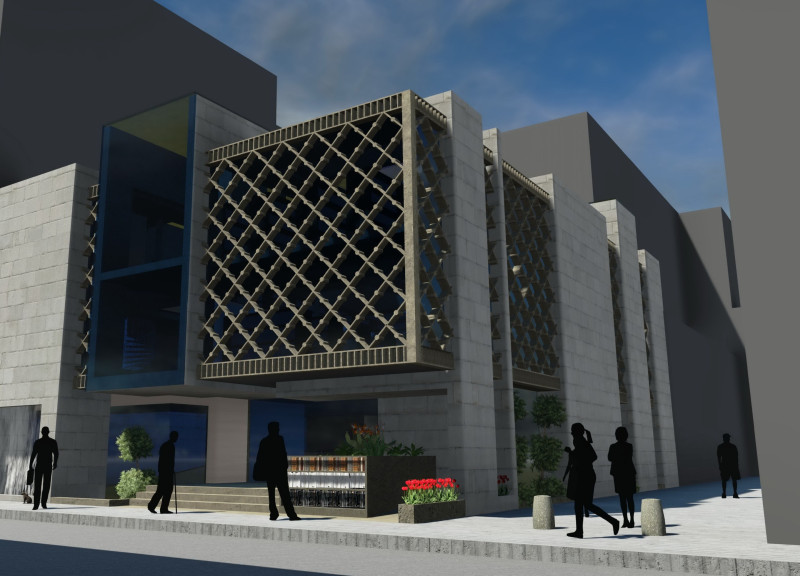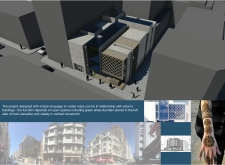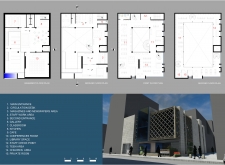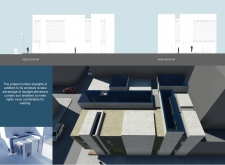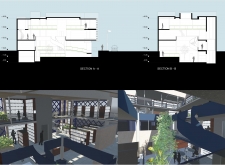5 key facts about this project
Functionally, this project is designed to serve as a hub for social interaction and collaboration. It incorporates various spaces, such as communal areas that encourage engagement and interaction among users. The open layout facilitates movement throughout the building, allowing individuals to easily navigate from one area to another. This spatial configuration reflects a deeper understanding of how architecture can foster community ties and supportive relationships among its users.
The building’s architectural massing is carefully executed, ensuring that it fits harmoniously within the streetscape. The overall proportions remain in alignment with neighboring structures, which helps to preserve the character of the area. Large expanses of glass are used prominently throughout the façade, allowing natural light to penetrate deep into the interior. This choice enhances the well-being of occupants by providing a connection to the outdoors while contributing to energy efficiency.
Materiality plays a pivotal role in the building's design, combining functionality with a commitment to sustainability. The use of concrete provides structural stability while presenting a modern aesthetic. Complementing this are elements of stone cladding that introduce a tactile quality and visual warmth, contrasting with the cooler tones of concrete. Glass elements are utilized not just for their aesthetic appeal but also for their capacity to invite light, creating bright and inviting spaces.
In addition to these traditional materials, steel features prominently in the project, contributing to both the building’s structural integrity and its distinct character. The careful detailing of steel components, including railings and support structures, is an example of how design can enhance both form and function. This is coupled with thoughtful landscaping that surrounds the building, which further integrates nature into the urban setting, inviting users to engage with outdoor areas.
The architectural design also includes specialized zones that cater to different functions within the building. The ground floor serves as the main entry point, characterized by a welcoming lobby and communal café area. This is a purposeful choice, fostering a sense of arrival and engagement. The vertical circulation paths, including staircases and elevators, are strategically placed to prioritize accessibility and encourage movement throughout the space.
From the architectural sections, one can appreciate the thoughtful layering of spaces, which ensures effective use of both horizontal and vertical areas. The interplay of these elements illustrates the spatial relationships within the design, allowing for a fluid experience as one moves through the building. The integration of skylights and ceiling heights further promotes an airy environment, enhancing the quality of life for the inhabitants.
This project distinguishes itself through unique design approaches that emphasize community, sustainability, and user experience. The thoughtful integration of green spaces not only enhances the building's aesthetics but also serves ecological purposes, contributing to urban biodiversity and mitigating heat island effects. The architectural design reflects a modern sensibility that respects and responds to its environment.
Those interested in gaining deeper insights into this architectural project are encouraged to explore the architectural plans, architectural sections, and overall architectural designs presented. These elements provide a comprehensive understanding of the project’s intent, functionality, and the underlying architectural ideas that shaped its creation.


